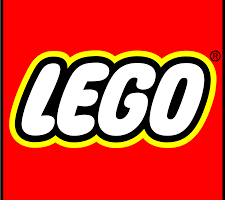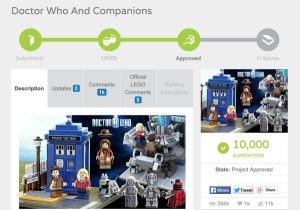Lego Ideas: a leading crowdsourcing platform in the Toy Industry

LEGO Ideas shows how the toy industry can embrace crowdsourcing platform
Overvi
ew of Lego Ideas
LEGO Ideas has been by far one of the most visible and comprehensive example of crowdsourcing in the toy industry. Having launched as LEGO Cuusoo, collaboration between LEGO and Cuusoo in 2008, followed by an international launch in 2011, and eventually becoming wholly run by LEGO in 2014, Lego Ideas is a crowdsourcing platform which let LEGO fans aged 13 and up to become a supporter or a creator of a new Lego set. A member of Lego Ideas can discover proposals for new LEGO sets created by other members, give feedback and vote, and share ideas on the discovered LEGO sets with your friends. If a member has an idea for new lego set, he can create a model, take photos, and write convincing project description in the platform. If one carefully follows the Project Guidelines and House Rules designed by LEGO and garner more than 10,000 supports from other members, one’s idea moves to the LEGO review phase where the LEGO Review Board chooses projects that officially become new LEGO sets. The LEGO Review board retains the right to decline any project, regardless of its support. The review sessions are held three times per year including January, May, and September. Projects selected during the LEGO Review go into production and are shipped around the world and released for sale. As of now, total 12 user generated sets have been approved and sold internationally.
How LEGO incentivize participants and manage its crowdsourcing platform
The LEGO Ideas has designed a very attractive incentive program and a strict regulation to encourage its fans’ participation and to manage the overall proposed ideas. The platform promises to offer both fame and financial gain to an originator of a successfu l idea approved by the LEGO Review Board; the originator will receive not only a 1% of the product’s net sales but also opportunities to work with professional LEGO designers, who create the final set based on the originator’s idea, to be featured in set materials, and to be recognized as the product creator. In addition, LEGO Ideas rewards participants other than those whose ideas are selected for the final production with the in-platform points and badges, so called Clutch Power, which show your peers in the platform the level of your contribution.
l idea approved by the LEGO Review Board; the originator will receive not only a 1% of the product’s net sales but also opportunities to work with professional LEGO designers, who create the final set based on the originator’s idea, to be featured in set materials, and to be recognized as the product creator. In addition, LEGO Ideas rewards participants other than those whose ideas are selected for the final production with the in-platform points and badges, so called Clutch Power, which show your peers in the platform the level of your contribution.
While the incentive program which offer both offline and online gains to participants ensures that a meaningful number of ideas flow in its production funnel, its strict and straight-forward ground rule regulation play a role as a filter in the funnel. Its age restriction, which requires an user of LEGO ideas to be at least 13 years old, ensures that every member can understand the platform’s ground rule and behave accordingly. Moreover, the LEGO Ideas have tried to minimize conflicts between the platform and its members through various conditions that define the scope of copyrights protected by the platform and of plagiarism. If a conflict among members regarding copyrights or plagiarism occurs, the LEGO Ideas will assign a moderator from its own group so that the issue can be settled in an objective manner.
LEGO Ideas’ strength and risk
The LEGO Ideas, as other leading crowdsourcing platforms do in the technology industry, illustrate how a company can create and capture value from a veryl fan base. By designing an attractive incentive program and transparent / objective operation policies, LEGO has turned its platform into its sustainable source of creative ideas. Moreover, because users can vote for his favorite project in the LEGO Ideas, the platform has enabled the company to quickly and conveniently test and understand users’ preference. Such user data lead the firm to reduce new product introduction risk. Lastly, because each Board review’s winners are announced internationally through various media, the LEGO Ideas serve as a good digital marketing platform.
The LEGO Ideas is certainly not free from risk and has some rooms for improvement. For instance, because it is a carefully controlled crowdsourcing platform where a winner is picked by the host, as its user-base continues to expand, it is crucial to improve the system’s transparency and fairness. The fact that the majority of fan projects that reach 10,000 supporters do not get made into LEGO sets (only 16 out of 50 projects that garnered 10,000 supporters were approved to product as LEGO sets) and that LEGO does not give any reasons for the rejections signal a chance that users may start to doubt the system’s integrity. Moreover, because a set released through LEGO Ideas is a long-term process (on average, it takes between a year and a year and a half for the set to become available for purchases), the platform’s effectiveness as a demand test or marketing tool is somewhat limited; the company may need to shorten the lead time considerably.
Despite such risks and shortfalls mentioned above, I think LEGO Ideas is one of the sophisticated and well-balanced crowdsourcing platform. if LEGO Ideas continues to maintain its users’ loyalty, to increase user engagement level, and minimize its churn rate through a series of effective marketing strategies, careful risk management measures, and innovative products, I think LEGO Ideas could be more than it is now.



Great choice of subject and good writeup. I love Legos and would have loved to be able to create my own sets when I was younger. This is a perfect tool for Lego to advance their design since the very essence of Lego is creating something new out of the pieces available to you. The traditional users are already the perfect market for the crowd sourcing tool since they’ve been doing this for years – just without publishing it to the community. It greatly lowers the risk for Lego in making the wrong products or products that are slightly off of what the market wants.
This is a great opportunity to bring in fresh new ideas for Lego. I wonder if they could attract more submissions if they provide prizes for a top group of candidates, such as, tours of their design labs or “a day at Lego corporate”. It does seem like a lot of upfront work for a very small probability of winning. Just adding a few more incentives may be the trick to attract additional submissions.
Great post! Totally agree with a lot of the points already made in your post and the comments regarding challenges. Transparency and possibly some sort of “consolation” award will be key for continuing to grow and maintain the user base for this platform. I could see how users could become disillusioned by the idea that 10,000 supporters for a project still does not get your idea to the manufacturing stage, leading to user disengagement.
I LOVED legos as a kid. As a girl growing up with a brother, I had the opportunity to play with the various sets as a kid in the 80s/early 90s-something many of my female grade school classmates did not as their moms were buying them dolls and other “female-oriented” toys; don’t get me wrong, I had my share of dolls too, but I am fortunate to have had a brother to be able to play with legos to cater toward my creative engineering desires.
I think the crowd-sourcing is an integral element of Lego’s strategy; it was kind of sad to see that Legos declined significantly in desirable among kids a few years ago, as video games and other toys seemed to occupy the desires of the growing minds. Legos restrategized and among these strategies for engagement, which also tapped into the nostalgia of “newer parents” in the generation that grew up with Legos, was the in-mall stores and Playland. However, I question the age restriction–I certainly understand the safety element of doing so, but I think Legos misses an opportunity to reach younger minds and build loyalty even earlier on–and habit. I wonder if 13 is a bit late, teenagers who may like the social networking component of the game, but aren’t necessarily avid consumers of lego products.
Lego has also been trying to cater a bit more toward girls going forward, and I think that they should make a particularly stronger effort in trying to engage female audiences and users, given its strong network effects. I still play with Legos when I go home, so it will be interesting to see how the next generations engage with my favorite childhood toy 🙂
I think this is a very smart move from Lego to foster this community engagement platform, especially since they are gradually loosing the favor of new generation kids. They have struggled in the past decade to try to stay relevant, even changing their initial belief of creating original characters and model sets to making lego version of Hollywood blockbusters. To me, making Legos that only mimics movies takes away the imagination aspect that encouraged kids to build whatever they want however they wanted it. Sadly, Lego found this was one of the most profitable routes to continue to stay relevant. I think that fostering this idea community is a great way of reverting back to the creativity aspects of the Lego spirit while gauging into what customer today really wants. Hopefully by moderating this forum effectively, Lego can move away from relying on Hollywood blockbusters to sell.
This is a very interesting post. Lego is a product that has uniquely been able to span generations and maintain excitement amongst both children and adults. By crafting an initiative that is specific to adults (individuals 13+), it seems that Lego is attempting to maintain its older audience. Do you think that this idea could have been successful without limiting the age range? I would be interested in understanding how children could serve in the crowdsourcing process, although that may be limited by legal restrictions.
Interesting post! I was recently having a conversation with a friend about the comeback of Legos and the future of the company. My friend mentioned that there are many Lego builders that have started posting videos of themselves building products (https://www.youtube.com/watch?v=Tlj0uZlye9w). He thinks this might be a new opportunity for Lego to build a digital strategy around the creation/learning of building Lego products online. Do you think this could be the next phase of the crowdsourcing strategy?
Great post! Definitely an interesting balance between curation and transparency. Too much transparency can also detract from the appeal of such a process. I think the key is getting kids involved in the crowdsourcing, and that might be better suited by a digital strategy. It could potentially be helpful in designing themes for the products.
Just a curious example of how Lego has been involved in another crowdsourcing example: http://www.theguardian.com/artanddesign/2015/oct/27/ai-weiwei-lego-collection-car-scheme-melbourne
In this example, artist Ai Weiwei is actually crowdsourcing legos from communities after Lego refused to sell the bricks to the artist on political grounds. The artist has set up “collection boxes” in the form on cars with ajar sunroofs around various communities and the response has been huge. Just thought you might enjoy this other example – Great post!